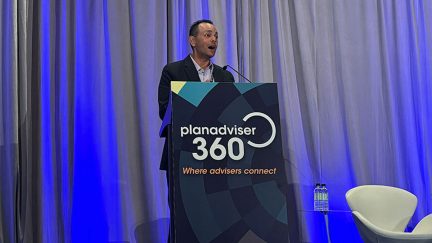Want the latest retirement plan adviser news and insights? Sign up for PLANADVISER newsletters.
Report Rounds Up Retirement Reform Needed
The U.S. Senate Committee on Finance’s Savings and Investment Bipartisan Tax Working Group has issued a report in support of recommendations for reform related to retirement savings.
To enable small employers to sponsor high-quality, low-cost plans, the working group recommends that the Committee on Finance consider proposals that allow employers to join open multiple employer plans (MEPs). The report says MEPs allow businesses to share administrative and other responsibilities associated with providing retirement plans to their employees; however, it notes, current law hinders the formation of MEPs by requiring a “nexus” between employers who wish to join an MEP.
The working group supports proposals that have been introduced to expand open MEPs made by Senator Orrin Hatch (R-Utah), Senator Susan M. Collins (R-Maine), Senator Bill Nelson (D-Florida) and former Senator Tom Harkin (D-Iowa). Although the specifics of the different proposals vary to some extent, they all allow a plan established by a “designated plan provider” or “pooled plan provider” to be treated as a multiple employer plan, regardless of whether the participating employers share any other nexus or common interest.
“We’re delighted to see the process of expanding the availability and utilization of multiple employer plans as an efficient means to expand retirement plan coverage, especially for smaller employers. The report issued by the bipartisan working group clears the way for broad congressional support for these programs, most likely before the end of 2015. We applaud the working group for their excellent report, and we look forward to seeing their recommendations implemented,” Terrance P. Power, president of The Platinum 401k Inc. in Clearwater, Florida, said in a statement.
NEXT: Encouraging plan startup and auto-enrollment.The working group also encourages consideration of proposals to increase the value of tax credits for all retirement plans and to further increase the credit for employers who offer automatic enrollment in their plans. The report notes that current law provides a tax credit of up to $500 per year, for three years, for start-up costs related to qualified small employer retirement plans. However, the uptake rate on this credit has historically been very weak; the total credit value claimed by taxpayers usually totals half of $1 million annually.
Legislators and President Obama have proposed enhanced start-up credits for small employers that elect to offer retirement plans. Specifically, Hatch has proposed increasing the size of the current maximum credit for small employers who adopt a new qualified plan from $500 to $5,000. Similarly, the president has proposed providing any employer with 100 or fewer employees who offers an automatic individual retirement account (IRA) a $3,000 tax credit. The president also proposes to triple the existing start-up credit, so small employers that newly offer a retirement plan would receive a $4,500 tax credit. Small employers that already offer a plan and add auto-enrollment would get an additional $1,500 tax credit.
The working group also recommends considering proposals to expand the safe harbor for automatic enrollment plans and providing a new credit to further help small employers offer matching contributions. Current law provides a safe harbor for automatic enrollment plans, under which an employer may “match” employee contributions of up to 6% of pay. Senators Collins and Nelson propose an additional safe harbor for these plans to allow employers to match employee contributions of up to 10% of pay. For the smallest businesses—those with fewer than 100 employees—Senators Collins and Nelson propose offsetting the cost of this additional match by providing a new tax credit equal to the increased match.
NEXT: Church plan clarifications and lifetime income portability.Other proposals the working group supports include:
- Proposals that allow long-term, part-time employees to contribute to employer-sponsored retirement plans;
- Bills to expand the Saver’s Credit;
- Clarifications related to church plans – Most church retirement plans are exempt from the Employee Retirement Income Security Act (ERISA) while subject to stringent state and federal laws and other regulations, including state fiduciary standards, state contract law and Internal Revenue Code (IRC) requirements. Because of their unique status, however, federal legislative and regulatory changes can unintentionally result in uncertainty or compliance issues for church plans. The working group supports consideration of the technical changes made by S.952, introduced by Senator Ben Cardin (D-Maryland) and Senator Rob Portman (R-Ohio), to alleviate this uncertainty and to ensure continued participation in church plans and retirement security for church plan beneficiaries;
- Improvements related to S-ESOP plans – Both the U.S. House and Senate are considering legislation to further encourage S Corporation employee stock ownership plans (S-ESOPs), in part by ensuring that Small Business Association (SBA)-certified small businesses do not lose their status by becoming employee-owned; and
- Proposals to promote the portability of lifetime income – One key feature of a defined contribution (DC) plan is the ability of plan participants to roll over the savings that have accrued in their retirement accounts when they change jobs. DC plans are being encouraged to offer annuities or other installment products as investment options, so participants can buy these products gradually over their careers, thus eliminating the risk of making one large annuity or installment product purchase when interest rates are low. But, portability of these lifetime income options is a concern. Senator Hatch has proposed treating a DC plan’s discontinuance of a lifetime income investment option as a distributable event, allowing affected participants to roll over the lifetime income investment to an IRA or other plan.
The working group noted that the issue of leakage—the use of retirement funds for purposes other than retirement income—is also critical to the preservation of savings. While emergency withdrawals may be appropriate in limited circumstances, the working group generally supports proposals that prevent leakage and ensure more secure retirements for taxpayers who take advantage of retirement plans.
Specifically, the working group supports proposals to extend the rollover period for plan loan amounts. The report explains that when an employee who has taken a loan against his DC plan balance loses or leaves his job, he generally is put to the choice of defaulting on the outstanding loan and incurring tax penalties or almost immediately repaying the entire outstanding loan balance. The working group supports consideration of proposals that extend this rollover period, giving an employee until the end of the tax year to pay back a loan.
The working group also supports allowing DC plan participants to continue to make elective contributions during the six months following a hardship withdrawal. Currently, after an employee receives a hardship withdrawal from a DC plan, he is prohibited from making elective contributions to the plan and all other plans maintained by the employer for at least six months. The loss of both employee contributions and company matching contributions during this period exacerbates the long-term negative effects of leakage on retirement savings, the report notes.
"We are glad to see the working group's focus on three key goals: increasing access to tax-deferred retirement savings, increasing participation levels of savings and discouraging income removal [leakage]," said the ERISA Industry Committee (ERIC) President and CEO Annette Guarisco Fildes in a statement. ERIC has supported legislative initiatives such as S. 606, the "Shrinking Emergency Account Losses Act" (SEAL Act), sponsored by Senators Nelson and Mike Enzi (R-Wyoming).
The working group’s report is at http://www.finance.senate.gov/download/?id=751DB03D-E73E-42A7-A947-E397DA8E0EF2.
You Might Also Like:

Great Gray Presses Senators to Allow 403(b) Plans to Use CITs

How to Establish Better Decumulation Options for Future DC Plans



